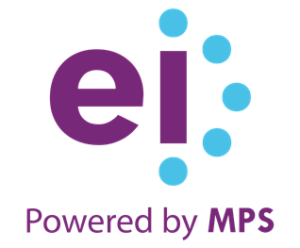Onboarding Trends To Drive New Hire Engagement

Onboarding Trends That Boost New Hire Engagement
In this new era of digital transformation, organizations that incorporate technology-driven induction training and onboarding trends focus on resolving talent retention, right skilling, and inclusion challenges. By embracing both emerging onboarding trends and technological tools, organizations can streamline processes, reduce manual errors, and shorten onboarding time, enhancing employee experiences through data-driven instantaneous feedback.
Challenges Faced By L&D Teams In Onboarding
Efficient induction training enables Learning and Development teams to improve new hire engagement and ensure seamless integration into the organization. However, onboarding also presents several challenges. Some of the common onboarding challenges that L&D teams face include the following.
Navigating The Global Workplace
This requires a thorough understanding of varied cultures, communication styles, and regulatory landscapes to help employees navigate and thrive in a multicultural workplace. Therefore, L&D teams must be able to:
- Appreciate diverse cultural norms, language differences, and work practices to craft an effective and inclusive onboarding experience for global employees.
- Customize onboarding processes and induction training for a globally distributed workforce through tailored content and delivery methods aligned with cultural, linguistic, and logistical considerations.
- Tailor the onboarding approaches to adapt to the various learning styles, expectations, and preferences of different age groups across multiple generations.
Addressing Varied Learner Needs
L&D teams face challenges related to varied learner needs, learning styles, and preferences. These include:
- Creating adaptable induction training strategies that can enhance new hire engagement by catering to different learning preferences and accommodating the individual needs, pace, and styles of new hires.
- Balancing standardization and customization in content for an effective onboarding experience and tailoring induction training content according to specific roles, backgrounds, and organizational needs.
Dealing With Diverse Learner Profiles
L&D teams face the following challenges while dealing with differences in the skillsets, roles, and technical abilities of new hires:
- Managing generational differences. Identifying and bridging the gaps in experience and learning styles of new hires.
- Incorporating inclusive practices for diverse learners to align with the organization’s cultural landscape. Adopting an onboarding approach that can embrace individuals from diverse backgrounds and promotes greater new hire engagement.
The Importance Of A Strategic Onboarding Process
It is crucial for organizations to adopt a strategic onboarding process to seamlessly integrate new hires into the system and achieve a more effective workforce. Adopting the latest onboarding trends is important, as it enables organizations to:
- Accelerate integration of new employees into the system and enhance new hire engagement. A positive initial experience fosters a sense of belonging among new hires, boosts job satisfaction, and reduces attrition rates.
- Align new hire induction training with business goals, company culture, and expectations. Improve employee performance, job satisfaction, and loyalty to gain a competitive edge.
- Closely examine the evolving expectations of new hires, especially when it comes to attracting and retaining top talent. Strategic onboarding allows organizations to focus on work-life balance, professional advancement, and creating a conducive work environment to address the changing expectations.
- Align onboarding with the current workplace trends and challenges. This alignment is essential to provide new hires with the necessary resources to adapt and contribute effectively to a dynamic professional environment.
New Hire Onboarding Learning Trends
Evolving workplaces are driving innovative new hire onboarding learning trends, including personalized learning paths, immersive learning technologies, and instantaneous feedback. These onboarding trends can be effective in improving the overall process and new hire engagement. Below are some of the new hire onboarding learning trends.
Technology-Driven Onboarding Trends
Artificial Intelligence, Virtual Reality, and automation constitute some of the technology-driven onboarding tools that enhance the onboarding experience, facilitate personalization, and promote efficiency through the seamless integration of new hires. Prominent technology-driven onboarding trends include:
- Pre-onboarding – Pre-onboarding is the period before an employee officially assumes their role. Engaging new hires in activities such as completing paperwork, making virtual introductions with peers, and aligning required resources can be utilized during this phase to create a smooth onboarding experience.
- Personalization – Customizing the onboarding experience based on individual profiles helps create a more effective introduction to the organization. Personalized induction training also helps new hires receive relevant information and support specific to their roles.
- Automation and AI – Automating administrative tasks helps streamline the onboarding process. Further, AI mentors, AI coaching, and AI-driven feedback can be used to improve the efficiency and personalization of learning experiences for new hires.
- Mobile onboarding – Mobile onboarding, using mobile platforms, makes it easier and more convenient for new hires to access the onboarding materials, training modules, and communication tools.
- Immersive learning – Implementing immersive learning experiences via Virtual Reality or Augmented Reality technologies can help enhance retention and understanding. New hires can benefit from hands-on experience through simulations and scenarios.
- People analytics – The insights gained from data analytics can be used to optimize onboarding processes and improve new hire engagement and overall employee experience.
Remote Work And Hybrid Onboarding
With remote work being the norm, it is essential for organizations to adopt onboarding processes that can accommodate the needs of remote and in-office employees. Some ways organizations can facilitate hybrid onboarding include:
- Remote or hybrid onboarding – Adapting onboarding practices such as virtual orientations, use of digital collaboration tools, and asynchronous training modules.
- Building culture remotely – Instilling company culture digitally through virtual team-building activities, regular communication, and initiatives that create an inclusive culture.
- Building human connections online – Using digital channels to build human connections through video-based meetings, open communication, and team-building activities.
Inclusivity And Accessibility In Onboarding
Inclusivity and accessibility in onboarding can create a welcoming and unbiased experience for all new hires, regardless of backgrounds or capabilities. For inclusive and accessible onboarding, organizations must consider:
- Inclusive onboarding programs – Creating an onboarding experience that is inclusive of diverse backgrounds. This may include content accessibility, appreciating cultural differences, providing equal opportunities, and building a sense of belonging for every employee.
- Accessibility – Ensuring onboarding materials and processes are accessible to all, including those with disabilities. This may require creating induction training content in multiple alternative formats, using assistive technologies and implementing inclusive practices.
- Constant support – Providing ongoing assistance, such as mentorship, regular check-ins, or constant communication, throughout the onboarding process. To overcome any challenges new hires may face, this approach will provide necessary assistance.
Interactive And Engaging Approaches
Using gamification, multimedia content, and interactive activities can make the onboarding process and the induction training experience more enjoyable for new hires. Some ways to enhance the onboarding experience for new hires are:
- Social media research – Using social media to gain insights into the professional backgrounds, preferences, and network connections of the new hires. These insights can be used to align induction training with relevant skillsets and deliver a more meaningful integration process.
- Immediacy – Delivering onboarding content, induction training modules, and necessary information promptly and efficiently to new hires. This will streamline the orientation process and enable new hires to quickly transition into their roles.
- Interactive onboarding – Incorporating interactive elements such as quizzes, simulations, and multimedia content in onboarding can encourage new hires to participate actively, enhance understanding, and create a positive overall impression.
Extensive And Continuous Learning
Through extensive and continuous learning in onboarding, organizations can demonstrate a commitment to the ongoing development of employees. This approach involves:
- Onboarding 2.0 – A longer, more comprehensive onboarding process that incorporates personalized learning pathways, the use of advanced technologies, and continuous feedback. This approach enhances the effectiveness of new hire integration and aligns the strategies with the evolving onboarding trends.
- Guided onboarding – Using buddy programs, mentors, and technology in onboarding can guide new hires through the integration process with an element of human connection.
- Continuous onboarding development – Extending Learning and Development beyond the initial phase of onboarding requires supporting the employees throughout their tenure through relevant training programs, skill-building prospects, and professional development initiatives.
Human Touch In Onboarding
Including the human touch in onboarding through personal interactions, mentorship, and communication can help create a supportive environment for new hires.
By balancing automated processes with human interactions in onboarding, organizations can streamline administrative processes while enabling individuals to foster meaningful relationships. With personalized support, the human touch can make the onboarding experience more humane.
Conclusion
The integration of technology is enabling organizations to deliver personalized and more effective onboarding experiences to new hires. Organizations not only adapt to the changing requirements of a remote workforce but also extend inclusive, accessible, and interactive onboarding and learning experiences well beyond the initial phase. As a result, organizations are able to build a positive and productive workforce.
To enhance new hire engagement and productivity, organizations must consider embracing the latest onboarding trends. Flexible work arrangements, inclusivity, and interactive elements, together with the latest technology, can help organizations streamline the onboarding process, create a supportive work culture, foster employee satisfaction, and fuel overall business growth.
Read More:

EI
EI is an emotionally intelligent learning experience design company that partners with customers in their Digital Transformation journey.
Source link



